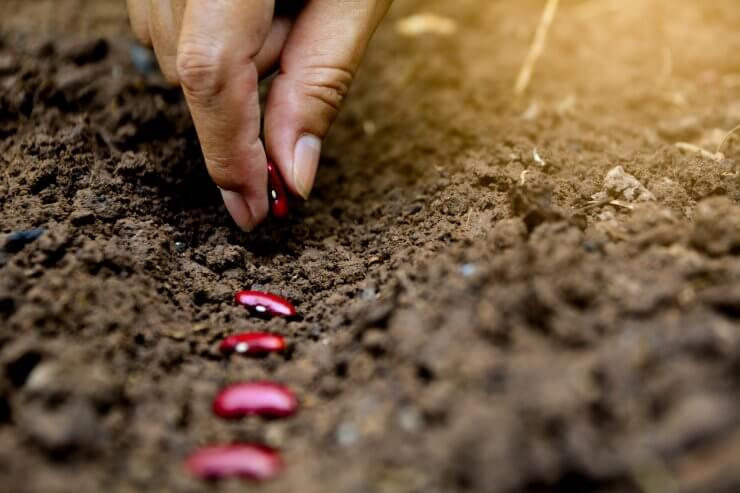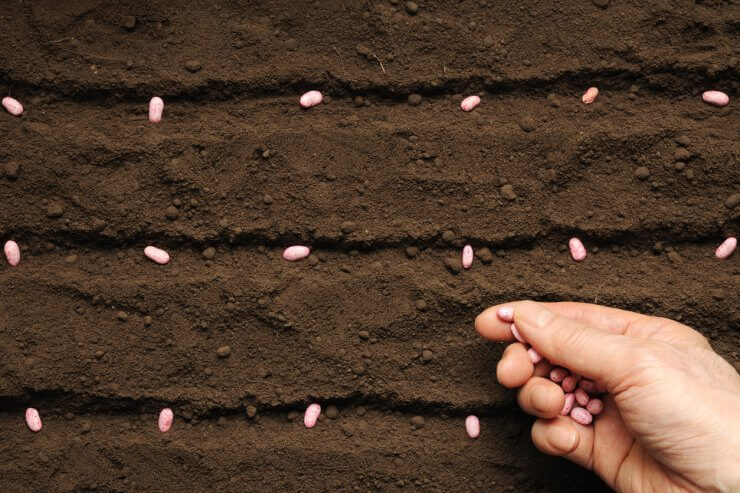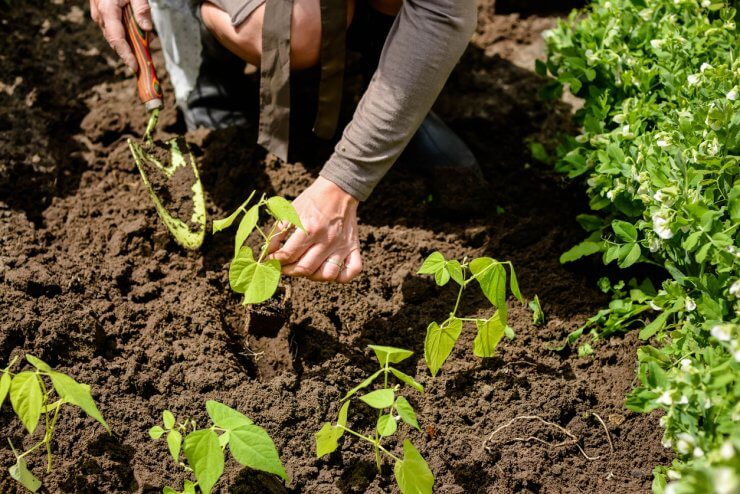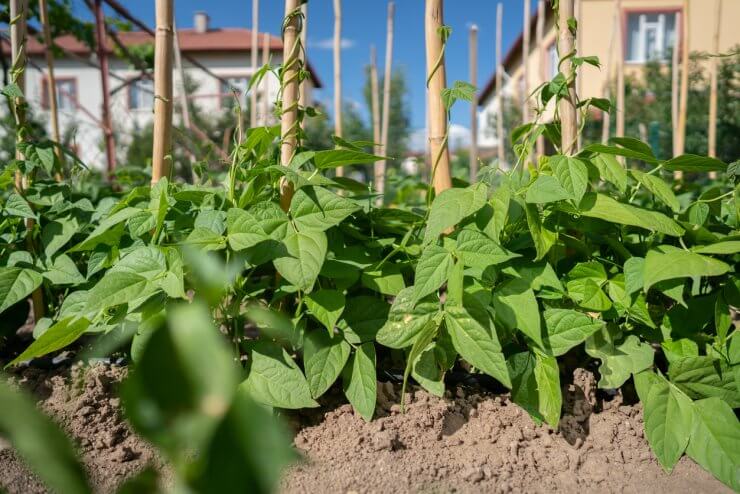
Bean there, done that with the green bean feast-or-famine cycle? You know what I’m talking about – that annual garden tradition where you wait forever for beans, then suddenly you’re drowning in them faster than you can say “not another bean casserole!” Then, just as quickly, they’re gone, leaving you bean-less and bewildered for the rest of the season.
Well, fellow bean enthusiasts, it’s time to spill the beans on succession planting – the garden technique that’s about to revolutionize your relationship with these versatile veggies!
Why Your Current Bean Strategy Is Probably Broken
Most of us are guilty of the “plant once and pray” approach. We clear a patch, toss in all our bean seeds on that one perfect spring weekend, then dust off our hands and declare “bean mission accomplished!”
But beans don’t care about your schedule. They care about their schedule, which typically involves a concentrated 2-3 week production window before tapering off. Mother Nature didn’t design beans to produce evenly all season – she designed them for efficiency. Beans want to mature enough fruit to ensure species survival, then put their energy elsewhere. Sneaky, right?

The Succession Solution
Succession planting is simply the art of staggering your plantings so you’re not harvesting everything at once. With beans, you’ve got three main approaches:
1. Time-Based Succession: The “Calendar Cadence”
This is the classic approach – plant a new batch of the same bean variety every 10-14 days. Here’s how to nail it:
- First planting: Sow after all danger of frost has passed and soil temps hit at least 60°F (16°C). (For you data nerds, beans germinate poorly below this temperature – they actually can sense the soil warmth through their seed coat!)
- Follow-up plantings: Continue new plantings every 10-14 days until about 60-70 days before your first fall frost date.
- Pro tip: In mid-summer heat, extend the interval to 16-18 days since beans grow faster when they’re living their best hot life.
- Lazy gardener hack: Instead of remembering to plant every two weeks (who actually does that?), tie your bean planting to another regular event. “Bill payment day is bean day” or “every other garbage day, plant beans.” Your credit score and your bean harvest will thank you!
2. Variety-Based Succession: The “Bean Diversity Portfolio”
Did you know different bean varieties mature at different rates? Mind = blown, right? Use this to your advantage:
- Early season: Start with speedy varieties like ‘Contender’ (42 days) or ‘Provider’ (50 days).
- Mid-season: Plant medium-maturing varieties like ‘Blue Lake’ (55-60 days).
- Late season: Finish with longer-season varieties like ‘Romano’ (60-70 days).
- Fun bean fact: Some varieties, particularly heirlooms like ‘Cherokee Trail of Tears’, were specifically selected by gardeners for extended harvest periods. These “cut-and-come-again” varieties will produce over a longer window than modern hybrids that were bred for commercial one-and-done harvesting.
3. Location-Based Succession: The “Microclimate Manipulation”
Your garden has hot spots and cool spots. Use this to your bean-y advantage:
- Warmer areas: South-facing, near walls that reflect heat, or in raised beds (which warm up faster).
- Cooler areas: North side of tall plants, areas with afternoon shade, or low spots in the garden.
- Garden nerd trivia: The temperature difference between the warmest and coolest spots in your garden can be as much as 15°F (8°C), which translates to about 7-10 days difference in maturity time for beans!

Creating Your Personalized Bean Succession Plan
Let’s put this all together into a practical plan that doesn’t require you to become a full-time bean manager:
Spring Startup (Early Season)
- Week 1: Plant early varieties in a warm spot
- Week 3: Plant medium varieties in a neutral spot
- Week 5: Plant late varieties in a warm spot AND early varieties in a cool spot
Summer Sustenance (Mid-Season)
- Week 7: Plant medium varieties in a neutral spot
- Week 9: Plant early varieties in a warm spot
- Week 11: Final planting of early varieties for fall harvest
This plan gives you six strategic plantings that will provide beans from early summer through fall frost with minimal overlap and gaps.

Bean Succession Boosters: Next-Level Tactics
Once you’ve mastered basic succession, try these advanced techniques:
The Relay Race Method
Plant pole beans alongside your bush beans. The bush beans will produce earlier while the pole beans are still climbing, then the pole beans take over production as the bush beans fade out. It’s like a bean relay race where the baton is your dinner plate!
The Fertility Factor
Each bean planting depletes different nutrients. Give later plantings a boost by adding compost tea or a light organic fertilizer to compensate. Think of it as serving your later beans a fancy espresso while your early beans got plain drip coffee.
The Shade Game
During hot summer months, consider planting beans where they’ll receive afternoon shade from taller crops like corn or sunflowers. In bean language, shade = “chill out and keep producing longer.”

Region-Specific Bean Wisdom
Your bean strategy should adjust based on your climate:
- Short-season northern gardeners: Focus on early varieties and accelerate your succession schedule to every 7-10 days.
- Hot-summer southern gardeners: Take a bean break during the hottest weeks (beans drop blossoms above 90°F/32°C), then restart succession planting for fall.
- Mild-climate coastal gardeners: You lucky beans can extend succession into fall for winter harvests!
Common Bean Succession Mistakes
- Forgetting to label: Nothing more frustrating than not knowing if you’re looking at baby bush beans or the start of pole beans. Label with planting dates!
- Ignoring irrigation: Later plantings germinate in hotter, drier conditions. Keep soil consistently moist until germination.
- Harvesting laziness: Not picking mature beans signals the plant to stop producing. Keep harvesting early plantings to extend their production while later ones mature.
The Bean Bottom Line
Looking for an easy crop that delivers a high yield, plenty of nutrition, and can make a statement in your garden? Grow green beans! Get all the details that go into growing crisp, crowd-pleasing beans that practically grow themselves in our Grow Great Green Beans Gardening Guide.
Succession planting beans isn’t just about having more beans (though that’s a delicious benefit) – it’s about having beans when you actually want them, extending your harvest season by 2-3 times, and avoiding the need to pressure-can 40 pounds of beans in a single desperate weekend.
Plus, there’s something deeply satisfying about outsmarting Mother Nature’s feast-or-famine design with a little human ingenuity. So go ahead – get succession planting and become the bean wizard your garden deserves!
Remember: Life’s too short for mediocre bean harvests!


 Previous
Previous


I have noticed that when my first crop of bush beans begin to taper off, gently bend the plant horizontally on the ground. Each leaf node will put up another stem which in effect is a brand new plant., which grows and produces a crop. You can get as many as six new plants from each original. This also works with snapdragons. I’m going to try this with other plants.